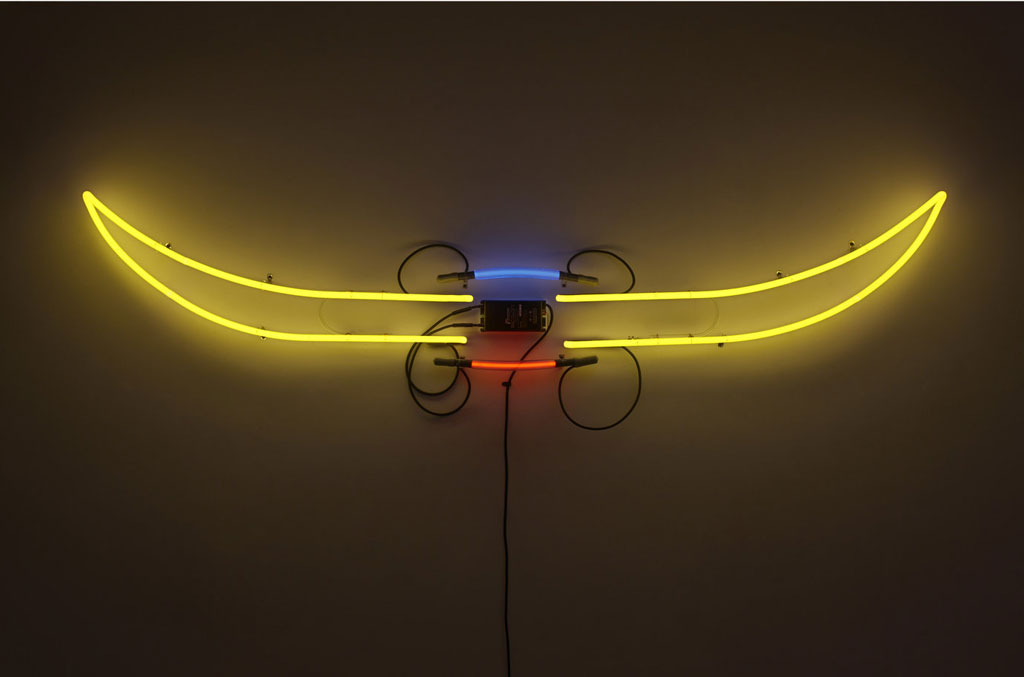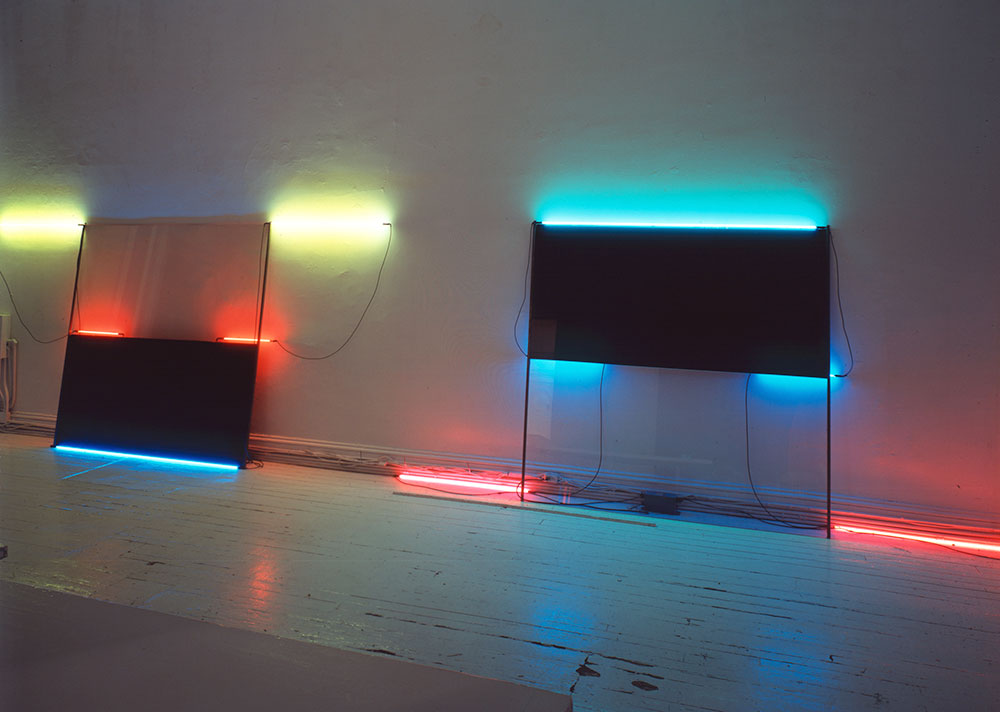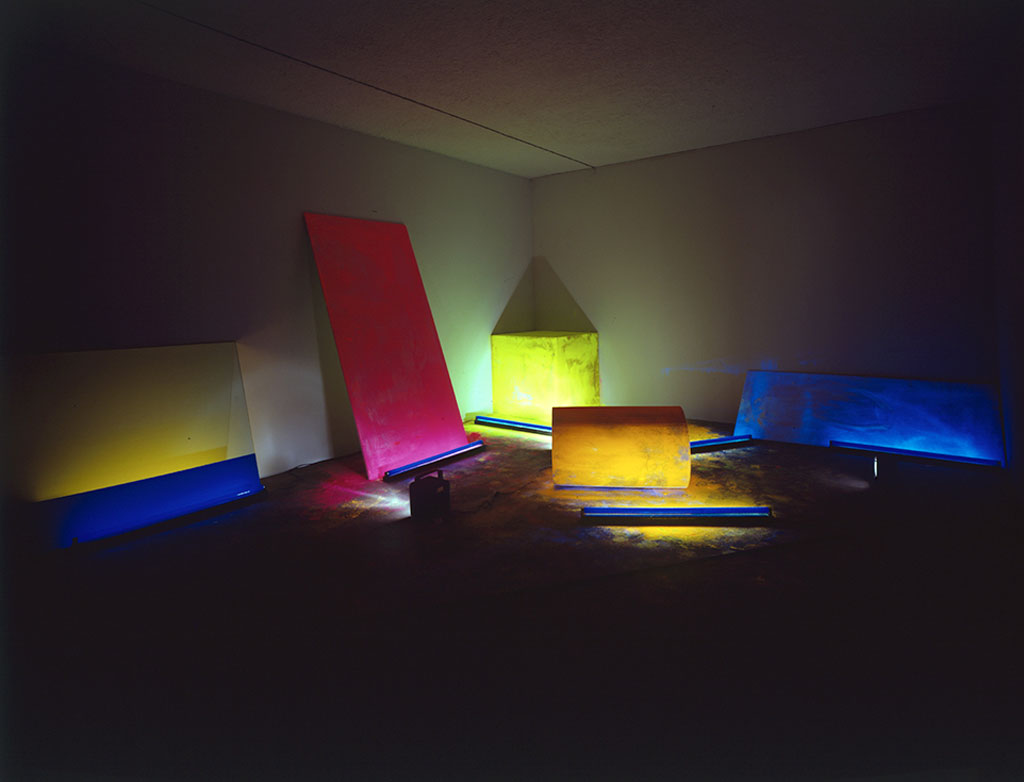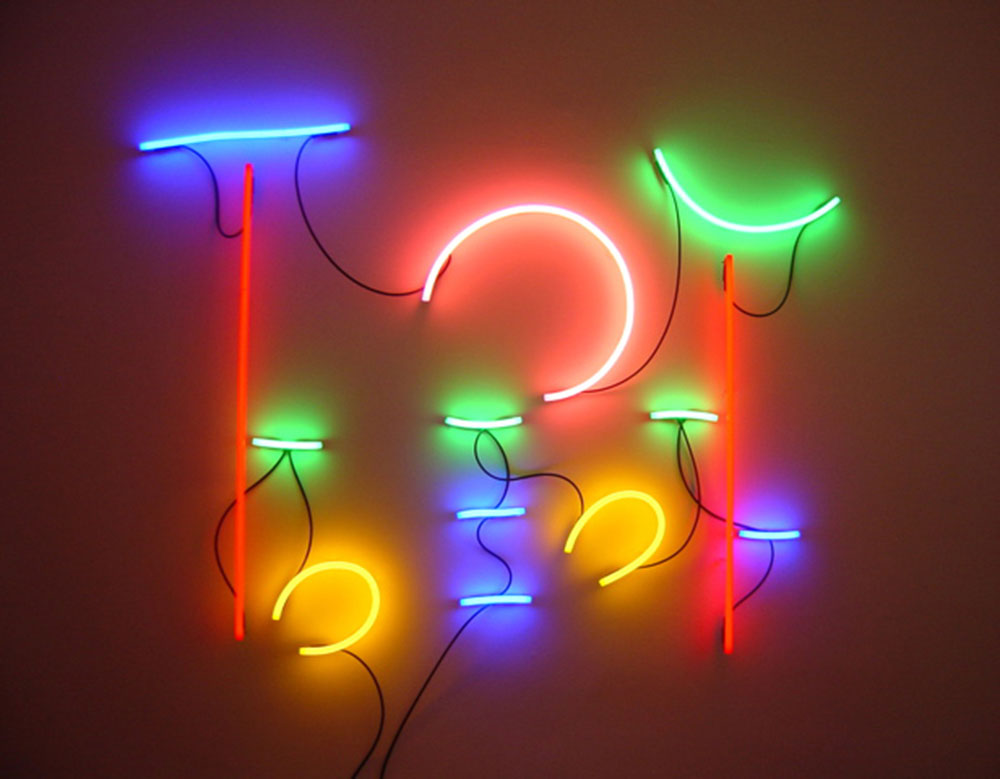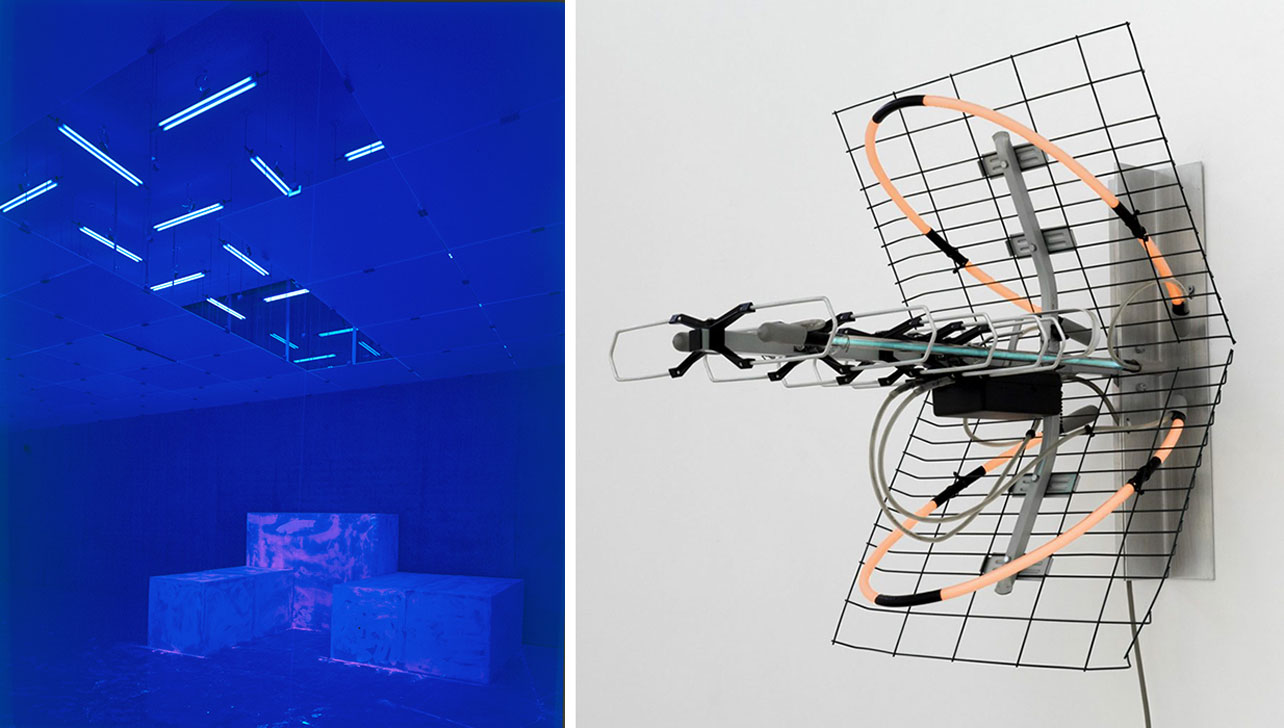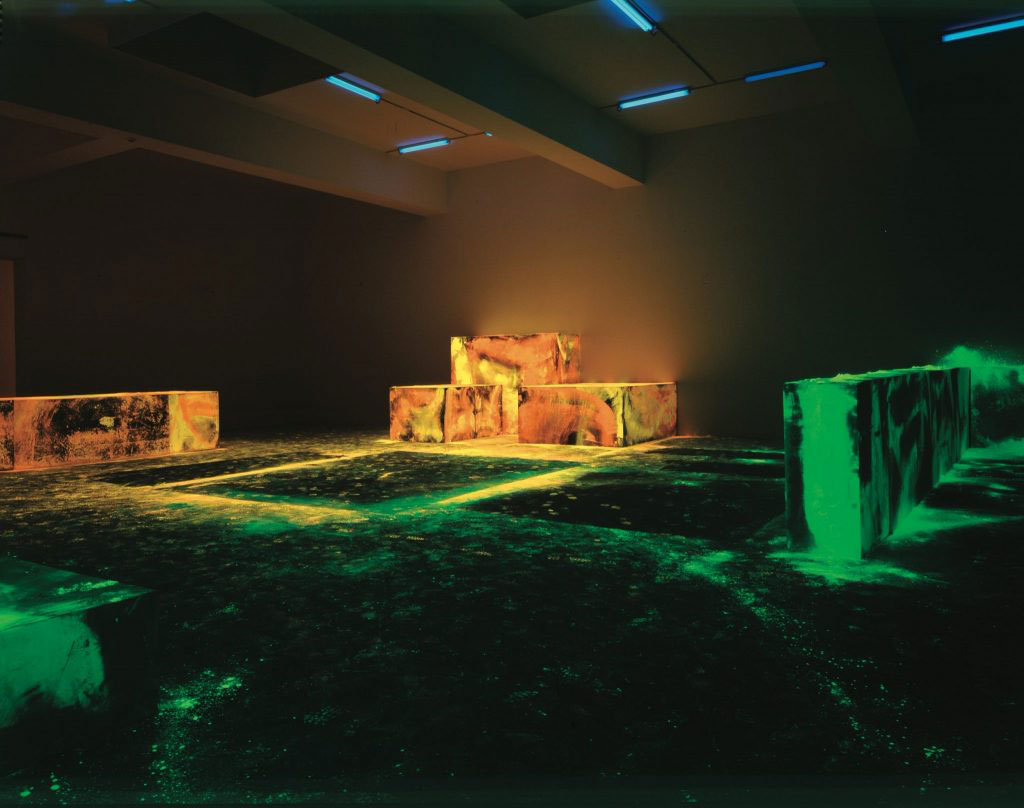TRACES: Keith Sonnier
Today is the occasion to bear in mind Keith Sonnier (31/7/1941-18/7/2020), a pioneering figure in conceptual, post-minimal, video and performance art of the late 1960s. Born in Grand Mamou, Louisiana in 1941, Sonnier was one of the first artists to incorporate light into sculpture: an innovation that forms the foundation of his subsequent work. Through documents or interviews, starting with: moments and memories, we reveal out from the past unknown sides of big personalities, who left their indelible traces in time and history…
By Efi Michalarou
Keith Sonnier studied art at the University of South-western Louisiana in Lafayette, and after a year in Paris, he received a stipend to teach at Rutgers University where he studied with Robert Morris and became a member of the Minimalist influenced “Rutgers Group” that incorporated industrial materials. In his early works, Keith Sonnier mainly used materials are not normally associated with the production of art: lead foil, strings, mesh wire, latex, flock material based on cellulose, cloth, but above all lightweight elements that did not possess any massive materiality. Later, he integrated light metal, neon tubes, and technical equipment in his sculptures and worked with communication media such as video, radio transmissions, cable transmissions via satellite, and telephone connections. In 1966, Lucy Lippard of the Fischbach Gallery mounted an exhibition entitled “Eccentric Abstraction” showing works by Sonnier, Eva Hesse, and Bruce Nauman that contrast with the Minimal Art of Donald Judd, Carl Andre, Sol LeWitt and Dan Flavin. Turning away from the formal demands of “non-objective art”, their post-Minimalism aimed at the sensual experience and pictorial character of the work of art, at the same time dealing satirically and ironically with the postulates of Minimal Art. In his works of art which the recipient is able to experience with all his senses, Keith Sonnier integrated elements of Pop and Minimal Art as well as – following his contact with the international Fluxus movement – some sort of interactive processes, aspects of a closer connection between art and everyday life, combined with acoustic and visual media. His earlier sculptures such as “Walk In” (1967) or “Mustee” (1968) are light-weight wall constructions of materials with a filigree structure such as Indian cotton or latex fixed to the wall and combined with narrow wooden sticks or string that became art only at the site of a particular exhibition. Once stored in the depot, they merely consist of their constituent parts. This flexible working method for the place in which Sonnier is staying at the time began with his exhibitions in Europe in 1967 and became his attitude and working method as an artist. Another group of early objects works with the contrast of the solidity of its material, aluminium, and the soft optical impression given by its cushion-like bulge, as does the wooden sculpture covered by a filigree cotton structure in “Lay In” (1965). Playing with minimalist shapes, these works also display an open character that reveals the production process since it remains visible through flowing fabrics (e.g. satin) or fine wire mesh. Even before New York, Keith Sonnier had his first solo exhibition in 1968 at the Ricke Gallery in Cologne. The Cologne contact with a number of manufacturers also facilitated the supply of the material for his largest group of works, the neon works. In the late sixties/early seventies, he was already producing wall objects from glass, latex with bulbs or neon tubes (“Hotel Delacourt”, 1968; “Triple Loop”, 1969) which to a certain extent take account of the process-character through time-switches (“In Between II”, 1969). Sonnier always used his colorful neon and argon tubes in a painterly pure, abstract form unlike other artists of the period who shaped them into texts or series of numbers. The combined effect of coloured light, flowing fabrics, flexible rubber and latex gave the objects of solid material a sensual, erotic atmosphere that the viewer was able to “grasp”. In the early seventies, his interest in the technical possibilities and qualities of the medium video led to the production of several works that once again had the creation process for their subject and reflected on video production and its technique. Either the studio situation is involved in the tape (“TV In and TV Out”, 1972), or a dialogue between artist and technician on the meta-plane illustrates its own creation (“Animation II”, 1974). The series “T-Hybrid” of 1971/72 consists of five tapes and represents a kind of visual collage of Sonnier’s color imagery, film clips, interference pictures, and language. In 1969, Keith Sonnier began his series “BA-O-BA” which in French-Haitian Creole language means something like a sensation by moonlight of bathing in color or light and its effect on the human body. Erected according to the same basic geometric structure, the interior installations, consisting of glass and mirror panes and colored neon tubes, conjure up the various ways of seeing of the recipient crossing the room. The different neon colors are reflected on the floor or on the wall, or bathe the participant in various lights. There follow several neon objects based on different traditional symbols or sign systems. An example is his group of works “SEL” (1978/79), based on Chinese characters that were first illustrated in colour and then reproduced as wall objects with coloured tubes and black cables. He also used felt-pen drawings to deal with runes in pictograms in the “Runic Series”, from 1980. The subject of communication (cf. also “Trois Pattes”, 1981, with radio and loudspeaker) and the conquering of spatial distance is taken up in Sonnier’s installation “Aesthesipol” (1982): a conglomeration of an aluminium construction in which a television set and a coin-operated telephone provide passive-active medial connections. In his most recent wall sculptures, he integrated a television aerial as an “icon” of modern technology. In 1933, Keith Sonnier produced “Lightway” in collaboration with the architect’s office Busso von Busse, the largest light sculpture in Munich Airport intended to provide a passage for meditative relaxation and calm for the stressed passenger upon arrival. Here, light and architecture are fused and, as Sonnier explains: “the light becomes the architecture, and the wall becomes a reflection of itself”. Over the past two decades, Keith Sonnier has received international recognition for his large-scale works specific to renowned landmarks. In 2000, the artist created a temporary neon installation on four façades of Peter Zumthor’s Kunsthaus Bregenz in Austria, entitled “Millennium 2000”. The large-scale installation coincided with the exhibition “Keith Sonnier: Environmental Works 1968-99”. In 2004, the artist created one of Los Angeles’s largest public installations. “Motordom” (2004) that illuminates the courtyard of Thom Mayne’s Caltrans District 7 Building as a permanent installation of red neon and blue argon.


